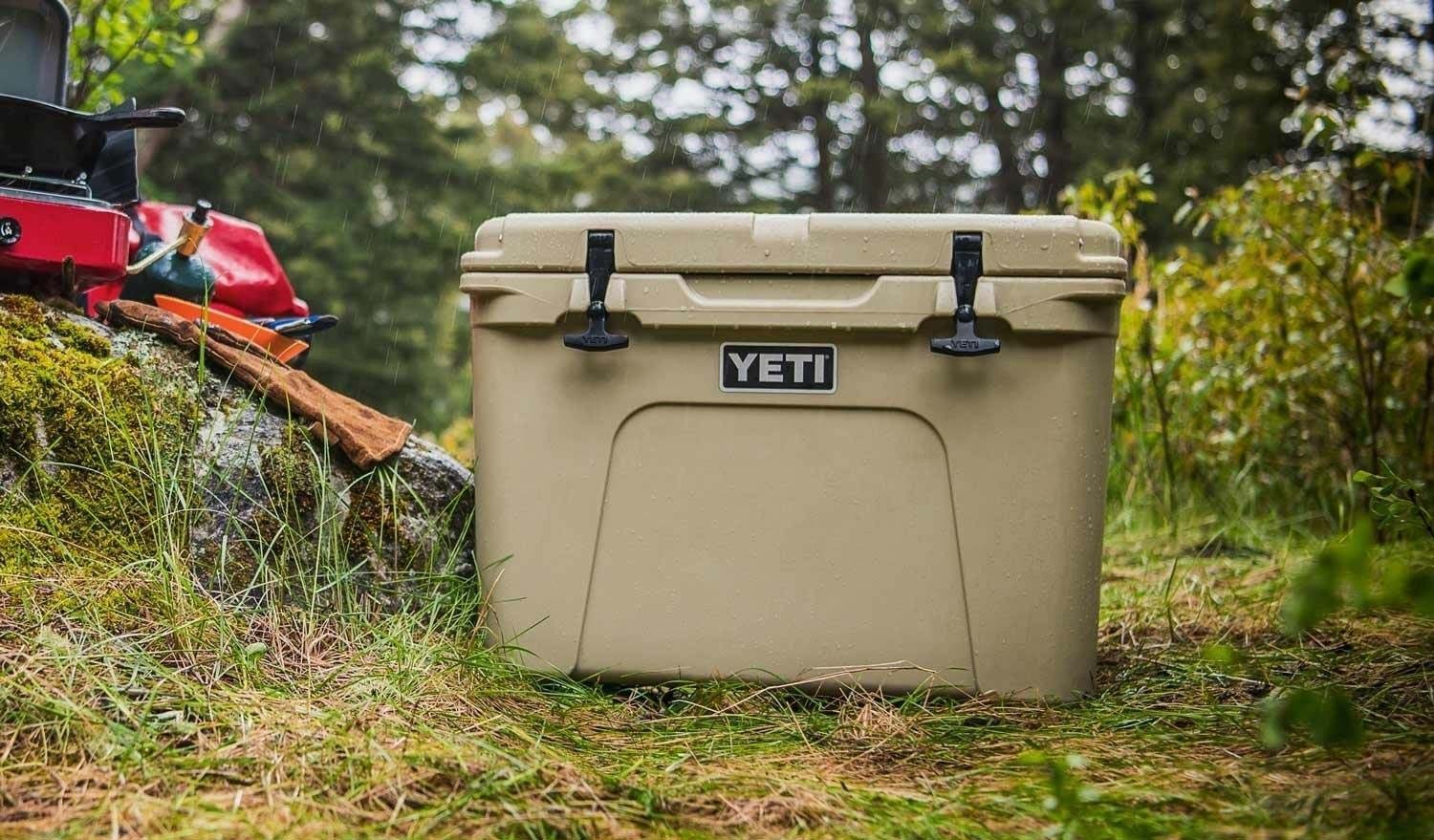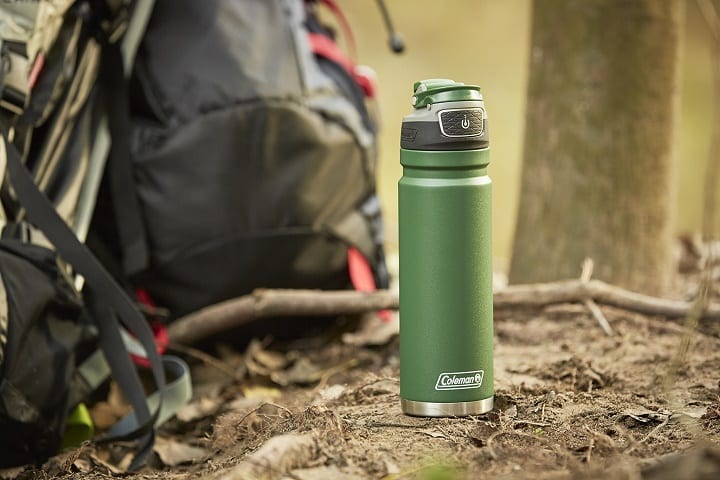Struggling to find an ice pack for your cooler that actually stays cold?
We’re here to help.
Every good camping cooler needs a quality ice pack to help keep your food chilled while outdoors. Finding that ice pack isn’t easy because there are hundreds of different options to choose from.
There are 3 key features that make for a great cooler ice pack :
- Size. Any good ice pack should be the right size for your cooler; not too big and not too small.
- Long-lasting. Ice packs last between 8 to 36 hours, on average. So it’s important that you find one appropriate for your chosen trip length.
- Food safe. All cooler ice packs should contain non-toxic gel and plastic that won’t contaminate your food.
Our top cooler ice pack picks
Best Budget Option : TOURIT Ice Packs
“Slim, convenient option for smaller coolers and short outdoor adventures.”
Best for the Money : YETI Ice Pack
“Built to stay cold for days on end, especially inside a YETI cooler.”
Best for Deep Freezing : Arctic Ice Tundra Series Ice Pack
“Has a 5ºF (-15ºC) freezing point that allows you to keep your food colder for longer.”
Quickest to Freeze : Orion Frostbite Arctic Ice
“Can be frozen in just 8 to 10 hour.”
Best Compact Sized : Fit & Fresh XL Coolers
“Slim shape also helps to save space within your cooler so you can pack in more food with less ice.”
Best Soft Ice Pack : Cooler Shock Freeze Packs
“Designed to stay cold for about 8 hours in the heat, making them perfect for shorter day trips.”
Best Durability : Engel Coolers Hard Shell Ice Pack
“Made from an extra durable hard-sided plastic that’s non-toxic and non-hazardous.”
TOURIT Ice Packs
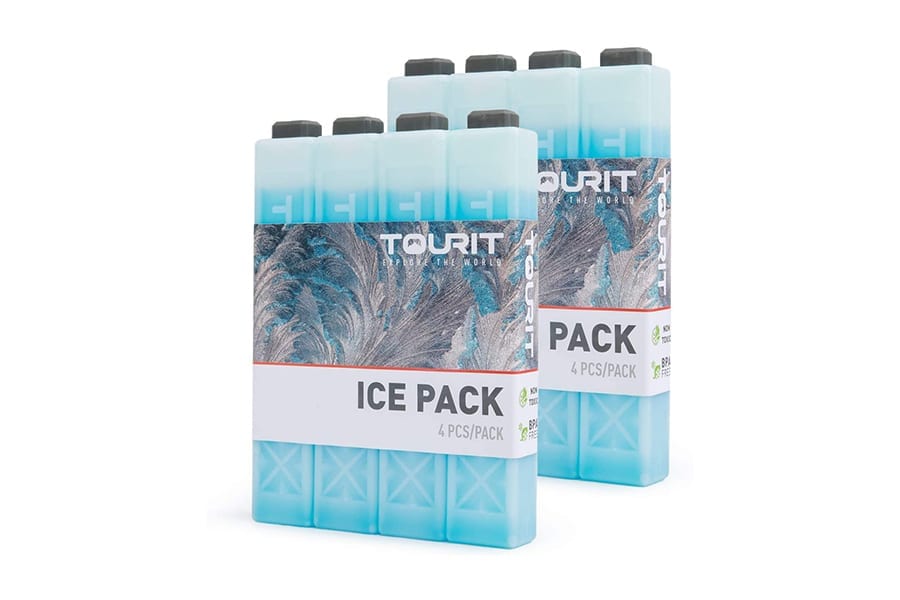
Boasting a unique performance-driven design, the TOURIT Ice Packs are a slim, convenient option for smaller coolers and short outdoor adventures.
Available in a 4 pack, these individual ice packs weigh just 0.45lbs (204g) and have a long, thin shape that fits easily inside a lunch-sized cooler. Each ice pack is filled with a powerful cooling gel that can freeze solid in just 8 to 10 hours.
The TOURIT Ice Packs are made with a durable, BPA-free non-toxic plastic. They all come with a 2-year warranty against defects and manufacturing issues for added peace of mind after you buy.
What we like
- Slim design. Perfect for lunch-sized coolers.
- Fast freezing. Ready to go in 8 to 10 hours.
- 2 year warranty for added peace of mind.
What we don't like
- Small size. Only appropriate for smaller coolers.
YETI Ice Pack
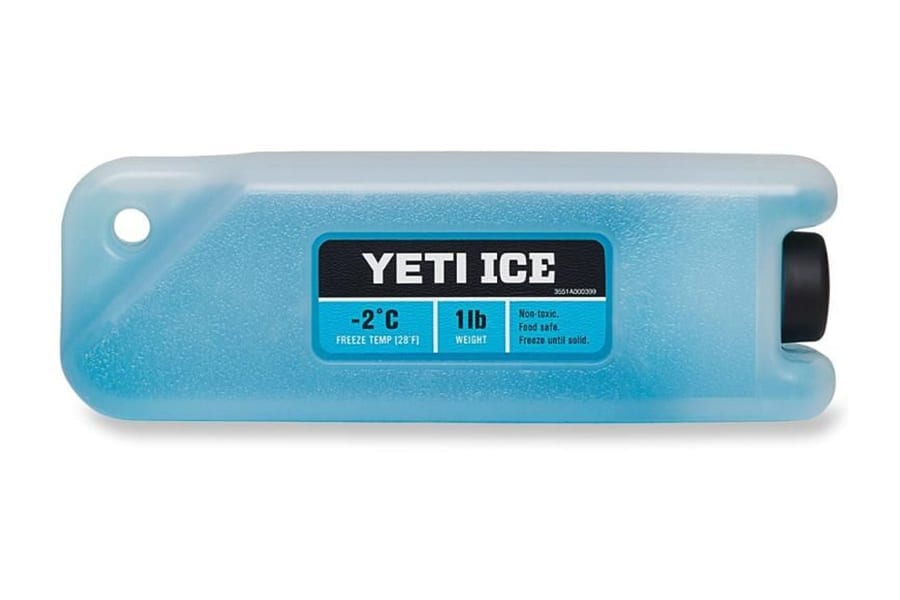
Purposefully designed to help you say bye-bye to regular ice for good, the YETI Ice Pack is a performance-focused option for longer camping trips.
Packed with high-quality gel, these ice packs are built to stay cold for days on end, especially inside a YETI cooler. They have a unique shape that’s designed to freeze faster, so they’re ready to go on your next trip just a few hours after you get home.
While they’re a bit on the pricey side, the made-in-the-USA YETI Ice Packs are some of the most durable around thanks to their high-density polyethylene construction.
What we like
- Stays frozen longer. Can stay cold for days.
- Extra durable. High quality plastic construction.
- Freezes faster thanks to its unique shape and design.
What we don't like
- Pricey. Expensive for a single ice pack.
Arctic Ice Tundra Series Ice Pack
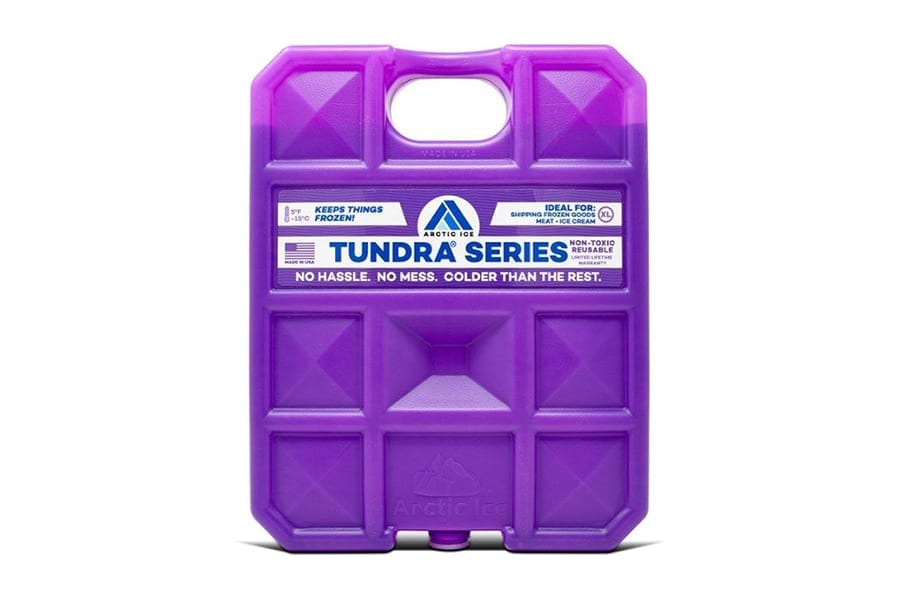
Made in the USA with the sole purpose of turning your camping cooler into a veritable freezer, the Arctic Ice Tundra Series Ice Pack is a functional option for use on extended camping trips.
These ice packs feature an impressive 5ºF (-15ºC) freezing point, which allows them to absorb more heat and keep your food colder for longer.
They feature a rugged leak-proof, non-toxic plastic container that’s crafted to allow for maximum surface area to improve cooling without adding unnecessary weight.
While they do take about 24 to 36 hours to freeze solid, they can keep food cold in a quality rotomolded cooler for days on end.
What we like
- Low freezing point helps food stay colder for longer.
- Lots of surface area improves performance without adding weight.
- Made in the USA. Ensures quality in each ice pack.
What we don't like
- Long freezing time. Can take 24 to 36 hours to freeze.
Orion Frostbite Arctic Ice
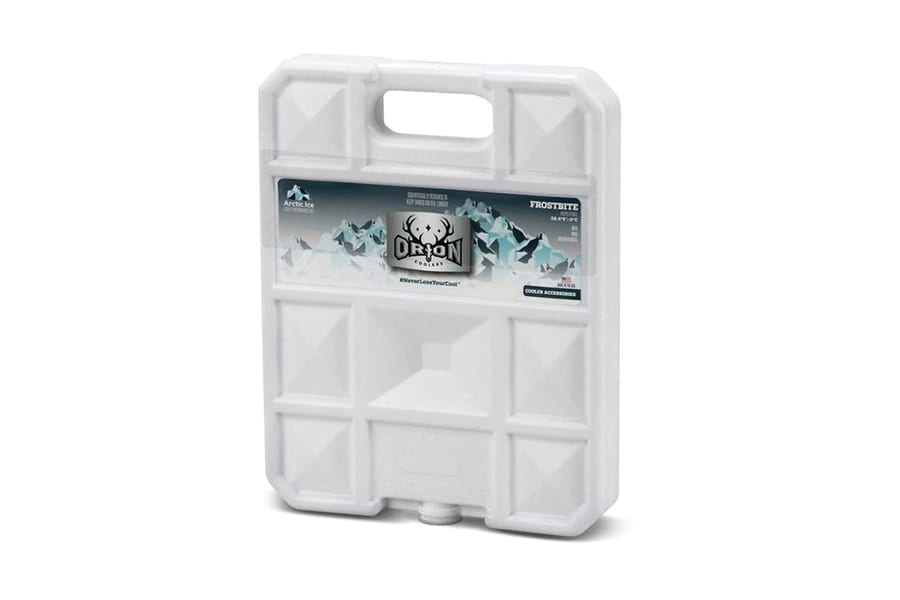
Rugged and reliable, the Orion Frostbite Arctic Ice is an ice pack designed for larger coolers, thanks to its large size and 28ºF (2ºC) freezing point.
Made in the USA with an extra-large construction, these ice packs are built to be layered on the bottoms and sides of a hard-sided cooler for improved cold retention. They can be frozen in just 8 to 10 hours, so you can freeze them at night and then use them again the next day.
One of the coolest parts about the Orion Frostbite Arctic Ice is that they’re purposefully proportioned as an ice substitute. So, 1 pound of these ice packs can replace 1 pound of regular ice for easier conversion on the go.
What we like
- Reusable ice equivalent. 1lb Arctic Ice equals 1lb regular ice.
- Quick freezing. Freezes solid in just 8 to 10 hours.
- Slim construction. Easier to layer in a large cooler.
What we don't like
- Low freezing point. Best for shorter adventures.
Fit & Fresh XL Coolers
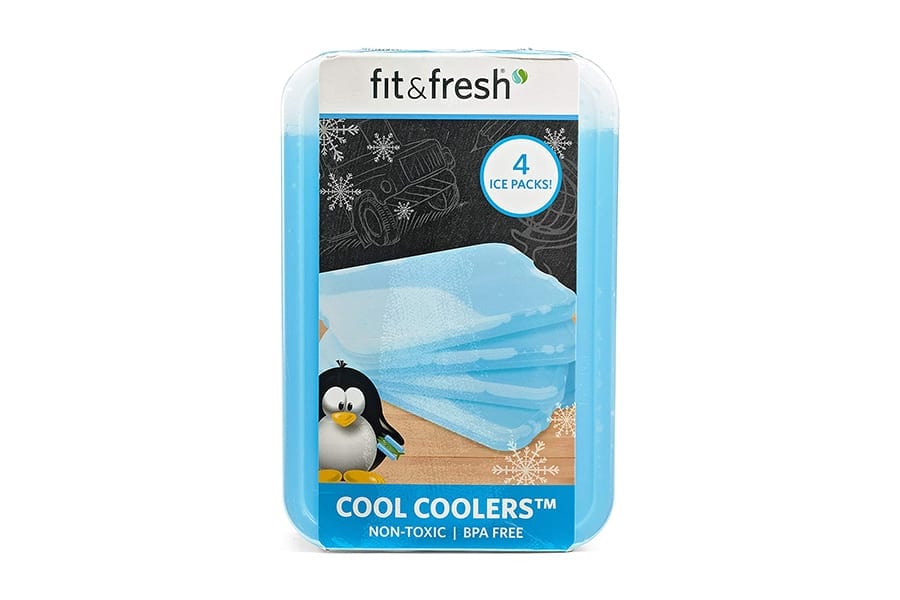
Featuring an over-sized construction and an affordable price, the Fit & Fresh XL Coolers is a versatile ice pack that’s designed for camping coolers.
Sold in a set of 2, these ice packs are made from BPA-Free plastic that’s appropriate for use around food. The non-toxic fill inside of these ice packs freezes in just a few hours and can stay cold throughout the day.
Their slim shape also helps to save space within your cooler so you can pack in more food with less ice.
Plus, the budget-friendly Fit & Fresh XL Coolers are designed in the USA by a women-owned company, so you can feel good about what you buy.
What we like
- Slim shape. Maximizes the amount of food in your cooler.
- BPA-free. Safe to use around food.
- Affordable. Sold in a budget-friendly 2-pack.
What we don't like
- For short camping trips. Only stays cold for about 1 day.
Cooler Shock Freeze Packs
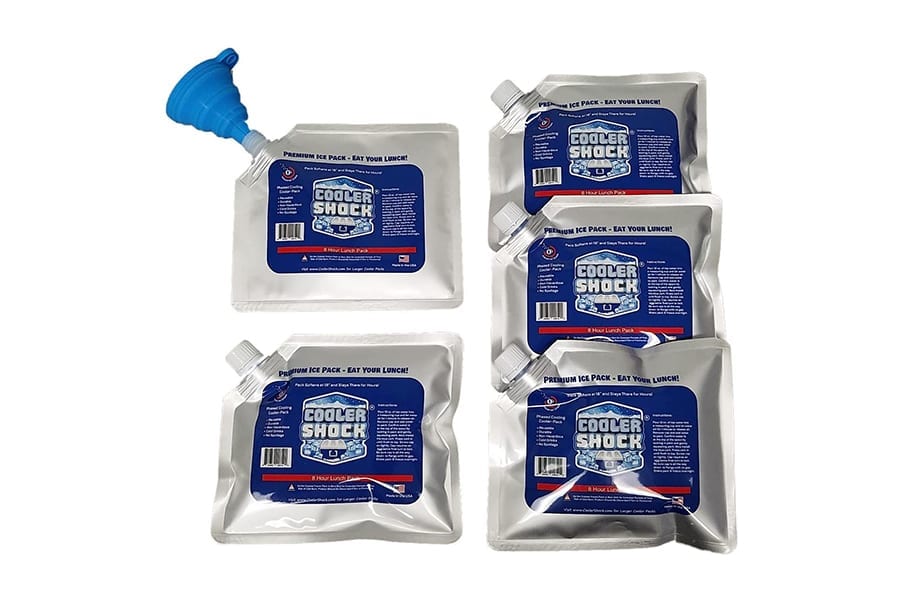
For maximum cooling prowess in a small, compact package, the Cooler Shock Freeze Packs are a solid choice.
These soft packs are built with a flexible, multi-layer aluminum and polyethylene exterior that securely holds a small amount of dry gel mixture. Before their first use, you simply have to fill them up with water, place them in the freezer for 12 hours, and then reuse them as many times as you’d like.
With a cooling temperature of 18ºF (-7.8ºC), the Cooler Shock Freeze Packs are designed to stay cold for about 8 hours in the heat, making them perfect for shorter day trips.
What we like
- Quick freezing. Takes only 12 hours.
- Compact size. Great for a smaller cooler.
- Soft sided construction. Efficiently uses space within the cooler.
What we don't like
- For short trips only. Small size is better for short trips.
Engel Coolers Hard Shell Ice Pack
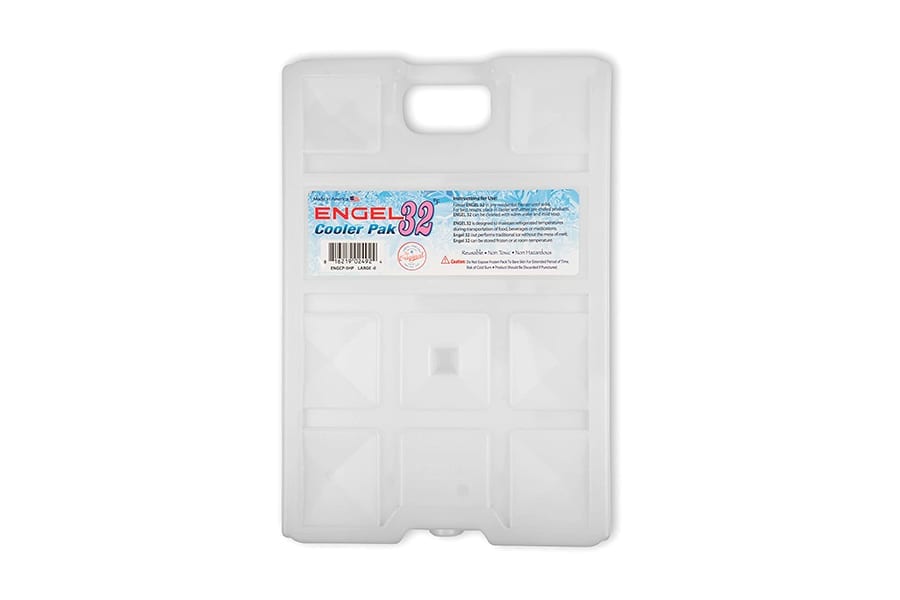
When durability is your top concern, the Engel Coolers Hard Shell Ice Pack is tough to beat.
These high-performing ice packs are built for keeping food and drinks cold on longer camping trips, thanks to their 32ºF (0ºC) freezing point. This higher temperature prevents the ice packs from freezing your beverage cans and your food for added freshness while outside.
Each Engel Coolers Hard Shell Ice Pack is made from an extra durable hard-sided plastic that’s non-toxic and non-hazardous for use around food. They’re also shaped perfectly to use as a layer around the floor and walls of your large cooler for maximum cold retention.
What we like
- Extra durable construction. Designed for frequent use.
- Keeps good chilled. 32ºF (0ºC) temperature stops food from freezing.
- Slim shape. Perfect for lining the sides of large coolers.
What we don't like
- Expensive. Pricey when compared to similar options.
Cooler Ice Packs Buying Guide
Ice packs might seem like simple pieces of gear, but they’re actually designed with high-end technology to keep your food as cold as possible while you’re outside.
These are 5 key things to keep in mind when shopping for cooler ice packs.
Ice packs vs regular ice vs dry ice - what’s the difference?
When deciding on a way to keep your food while camping, you have 3 primary options: ice packs, regular ice, and dry ice.
Here’s what you need to know.
Ice packs
Ice packs, like the Orion Frostbite Arctic Ice, are hard or soft-sided containers that are filled with water, silica, food coloring, and propylene glycol. The last ingredient, propylene glycol, is responsible for lowering the freezing temperature of the water so that it stays frozen for longer, even in above-freezing conditions.
The main advantage of ice packs is that they make no mess as they thaw and they are reusable. Although they have a higher upfront cost, they help you save money down the line because you don’t need to buy more ice for every trip.
Regular ice
Regular ice is just frozen water and you can normally buy it at gas stations and grocery stores. If you’re just going on one camping trip, a single bag of ice is usually cheaper than a handful of ice packs.
However, regular ice makes a mess when it melts and can’t be reused (well, you could re-freeze the melted water, but that’s more of a hassle than it’s worth).
Block-style regular ice melts more slowly because it has a less exposed surface area. However, cubed regular ice is better at chilling food and drinks because it can be used to completely surround whatever you’re trying to chill.
Dry ice
Dry ice is frozen carbon dioxide. It’s commonly used in shipping and is a popular option because carbon dioxide sublimates (goes from a solid to a gas) at normal Earth temperatures.
This means no mess and no clean up once the ice is gone.
That being said, dry ice is expensive and is really, really cold (-109.3ºF/-78.5ºC). So, care is needed when handling it to prevent freezing injuries. Also, dry ice is only appropriate in situations where you want to keep food frozen, rather than chilled because of its super-low temperature.
Freezing temperature
Every ice pack has a freezing temperature, which has a direct impact on its performance outside.
There are two main categories; those that freeze around 32ºF (0ºF), like the Engel Coolers Hard Shell Ice Pack, and those that freeze below 20ºF (-6.7ºC), such as the Cooler Shock Freeze Packs.
The idea here is that ice packs with lower freezing points will last longer because they need to absorb more heat before they melt.
However, one thing to keep in mind is that items in very close contact with ice packs, like the Arctic Ice Tundra Series Ice Packs, which have very low freezing points (5ºF/-15ºC), can accidentally freeze.
So, these models are best for situations where your food needs to stay really cold for a long time, rather than for your lunch that you’ll eat in a few hours.
Longevity
It’s hard to give an accurate estimate as to how long an ice pack will last because it all depends on the cooler that you use and the conditions that you’ll face.
But, as a general rule, larger ice packs with lower freezing temperatures, like the YETI ICE Pack, can normally last about 2 to 3 days in a well-insulated cooler and even longer in a burly rotomolded cooler with a freezer-quality gasket.
Meanwhile, smaller options with higher freezing points, such as the Fit & Fresh XL Coolers, usually last about 8 to 10 hours.
Basically, the larger the ice pack, the longer it will last because it has a better surface area to mass ratio. Size usually has a bigger impact on longevity than the freezing point, but the quality of your cooler also makes a difference.
Shape, size and weight
With ice packs, larger models, like the 5lbs Engel Coolers Hard Shell Ice Pack will last longer than smaller models, like the 2lbs Fit & Fresh XL Coolers. Nevertheless, they also weigh more and are harder to pack, particularly in smaller coolers.
Therefore, the shape of an ice pack also makes a big difference.
Models, like the TOURIT Ice Packs, which have a slender shape, are easier to fit into smaller coolers. On the other hand, options like the Orion Frostbite Arctic Ice, which have a large, flat shape, are better for lining the walls and floor of a larger cooler.
Hard vs soft outer casing
Ice packs are available as either hard or soft-sided options.
- Soft ice packs, like the Cooler Shock Freezer Packs, tend to be lighter and more affordable. While they usually don’t keep food cold for as long as their hard-sided counterparts, they are easier to pack in and around food, particularly in small coolers. Keep in mind, though, that soft models are also more prone to punctures.
- Hard-sided ice packs, such as the YETI Ice Packs, are generally heavier, bulkier, and more expensive. Although they tend to be better at keeping food cold, they can be tricky to pack, especially if you opt for larger models.
Therefore, unless you get a hard-sided option, like the TOURIT Ice Packs, that’s thin and compact, they’re better for use in high-volume coolers on longer camping trips.
FAQ
How long do ice packs take to freeze?
The average ice pack takes between 8 to 24 hours to freeze. However, some larger models with lower freezing points can take up to 36 hours to freeze solid.
How long does ice last in a cooler?
Most ice packs can last between 8 to 24 hours depending on their size, material and cooler used. Some larger options with lower freezing points can keep food in high-quality rotomolded coolers chilled for much longer – sometimes up to 1 to 3 days.
Which ice packs stay cold the longest?
Ice packs that have a freezing point below 20ºF (-6.7ºC) such as Cooler Shock Freeze Packs can stay cold the longest. With the lower freezing point, it will need to absorb more heat to melt.
Is the blue liquid in ice packs poisonous?
The blue liquid is not poisonous and non-toxic. For some, it can be mildly irritating to the skin and eyes. However, anyone that accidentally ingests it should see a physician for evaluation.
Are ice packs reusable?
Most ice packs sold for use in coolers are reusable and re-freezable. The exception is ice packs that are sold at pharmacies for use on injuries, which are generally single-use, disposable models.
Gaby Pilson
Gaby is a professional mountain guide with a master’s degree in outdoor education. She works primarily in the polar regions as an expedition guide, though she can be found hiking, climbing, skiing, sailing, or paddling in some of the world’s most amazing places when not at work.
